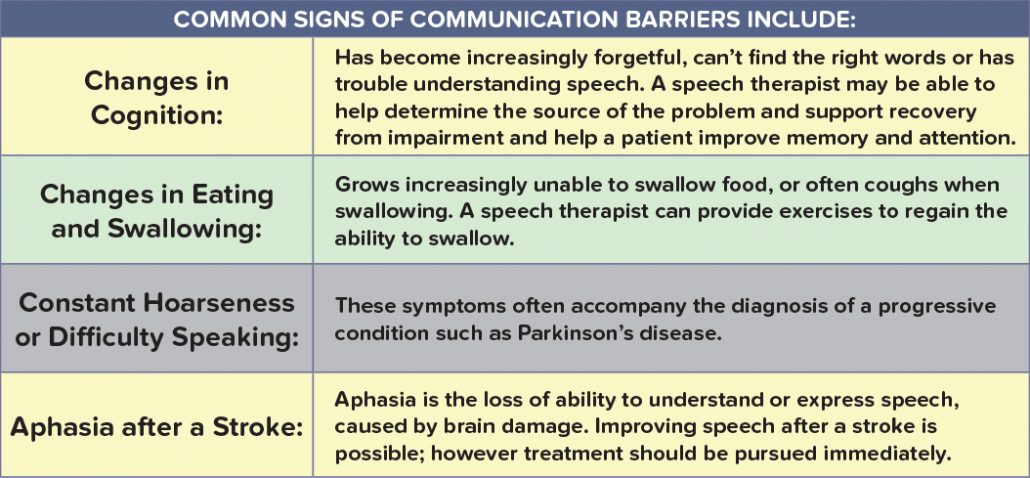Communication is an important life skill that connects us to those around us. The ability to communicate effectively is important at any age, but for older adults it can be absolutely vital. Older adults need to be able to successfully describe what they need in order to avoid emergency situations. Speech Therapy can be a valuable tool for adults struggling with communication.
As people age, normal changes occur in their speech, language, memory, and swallowing. Vocal cords can become less elastic and larynx muscles can weaken, making it difficult to talk in a manner they are accustomed to. In addition to speech issues associated with normal aging, older adults may experience complications with communication or swallowing due to their heightened risk of dementia, Parkinson’s
disease, or stroke.

At Healthcare Therapy Services our Speech-Language Pathologists can assist in differentiating between normal aging and disordered communication or swallowing function. We also provide vital services to those who have communication, cognitive, or swallowing impairments following illness, trauma, or disease.
MAY IS BETTER HEARING & SPEECH MONTH
Each May, Better Hearing & Speech Month (BHSM) provides an opportunity to raise awareness about communication disorders and the role Speech Therapists play in providing life-altering treatment.
